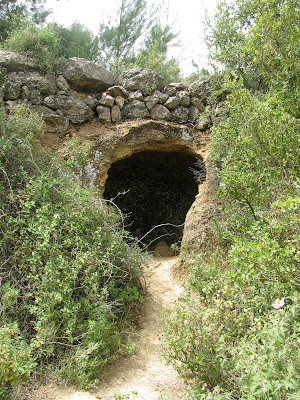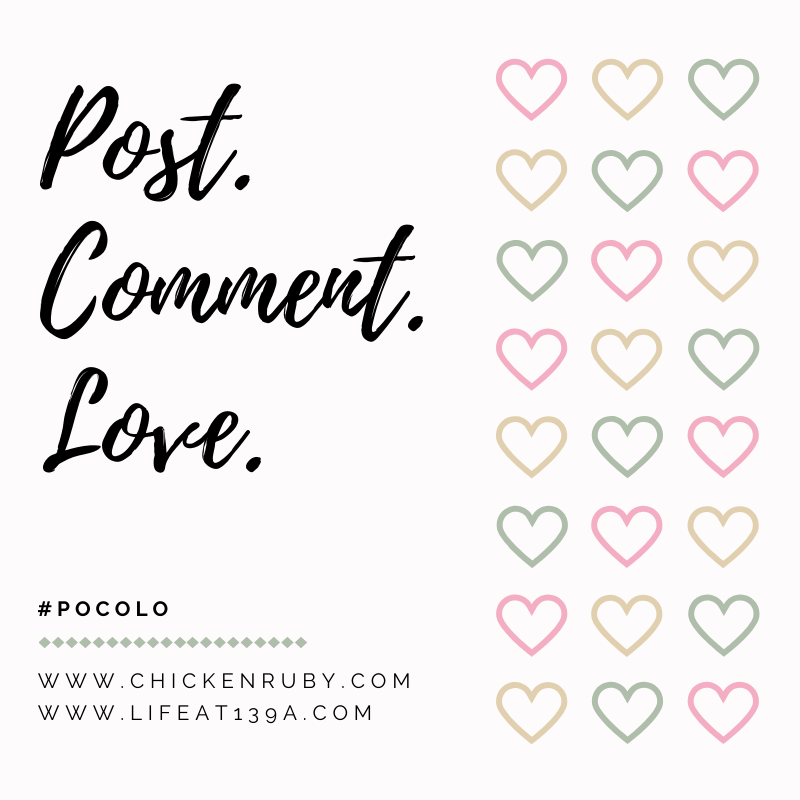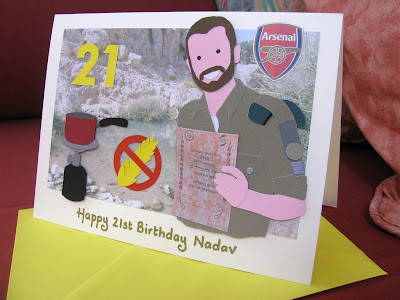This is Israel.
I am really not sure why it took me so long to hike Shvil HaMaayanot
(The Springs Trail) in the Jerusalem Hills. It was the perfect route for me.
The views over
Nahal Sorek and its tributaries were spectacular and the spring flowers were at
their very best. Perhaps the only downside was that the maayanot,
springs, which give the hiking route it's name, were too full of swimmers for
my liking, due to it being the Passover holidays. No matter, I will just
have to hike the route again!
We passed several springs on the trail, just some of the many small hidden
springs which flow out of the hills to saturate the surrounding vegetation.
Over the years, man has learned to cultivate the water from these underground
springs to irrigate agricultural areas. Villagers would dig tunnels into the
rock to obtain a flow of water. The pools in front of the entrance to these
tunnels became small reservoirs, used to supply drinking water to livestock
and humans. Sometimes the water would be directed downhill from the pool by
aqueducts to irrigate vegetable gardens. You can see terraces, now forested,
on both sides of the trail.
The trail took us along the side of a mountain ridge and past several caves
and springs and other cool things to explore. I dipped my feet in the cold
water leading into one cave, then climbed out the back of it to continue on
our way. Soon we reached the first big spring on the trail, Einot Uzi. It
was clearly a warm weather favourite and was rather busy! We found a spot to
rest and to enjoy a kosher for Passover snack, before returning to the
trail. Our next stop was Ein Tamar, a shallow spring surrounded by a
palm tree and a shaded picnic area. The spring is named after Tamar Natan,
who died at a young age. The pool was built by her friends and other
organisations.
We continued on the green-marked trail, stopping for a picnic with wonderful
views and surrounded by beautiful flowers. It was a very hot day and we
could have continued towards Moshav Even Sapir, on the last part of what is
officially Shvil HaMaayanot, but at this point we
decided to turn back. This time the hike was uphill and a little harder in
the heat, but the flowers and views made it all worthwhile. I spotted
beautiful red poppies, Pink Butterfly Orchids and some very late Persian
Cyclamen. The pink and white rockrose, below, were abundant.
The trail starts near
Yad Kennedy, a
memorial to John F. Kennedy, the 35th President of the United States, who
was assassinated in 1963 at age 46. This memorial was built 3 years after
his death. It is shaped like the stump of a tree to symbolise his life cut
short. The memorial has 51 pillars representing the 50 states of the union
plus Washington DC. The emblems of the states are on the outside of each of
the pillars. Inside the memorial is a bronze facial outline of John F.
Kennedy, and in the centre of the memorial an eternal flame.
Also nearby are Horvat Saadim, the Seadim Ruins, which we visited back in 2020. The ruins were called Khirbet Sa'ida, which means "Fortunate Woman Ruins" in Arabic and are the remains of a Byzantine agricultural farm and an ancient mosque. They can be visited - if you still have the energy - before returning to your car.
Also nearby are Horvat Saadim, the Seadim Ruins, which we visited back in 2020. The ruins were called Khirbet Sa'ida, which means "Fortunate Woman Ruins" in Arabic and are the remains of a Byzantine agricultural farm and an ancient mosque. They can be visited - if you still have the energy - before returning to your car.
























































































